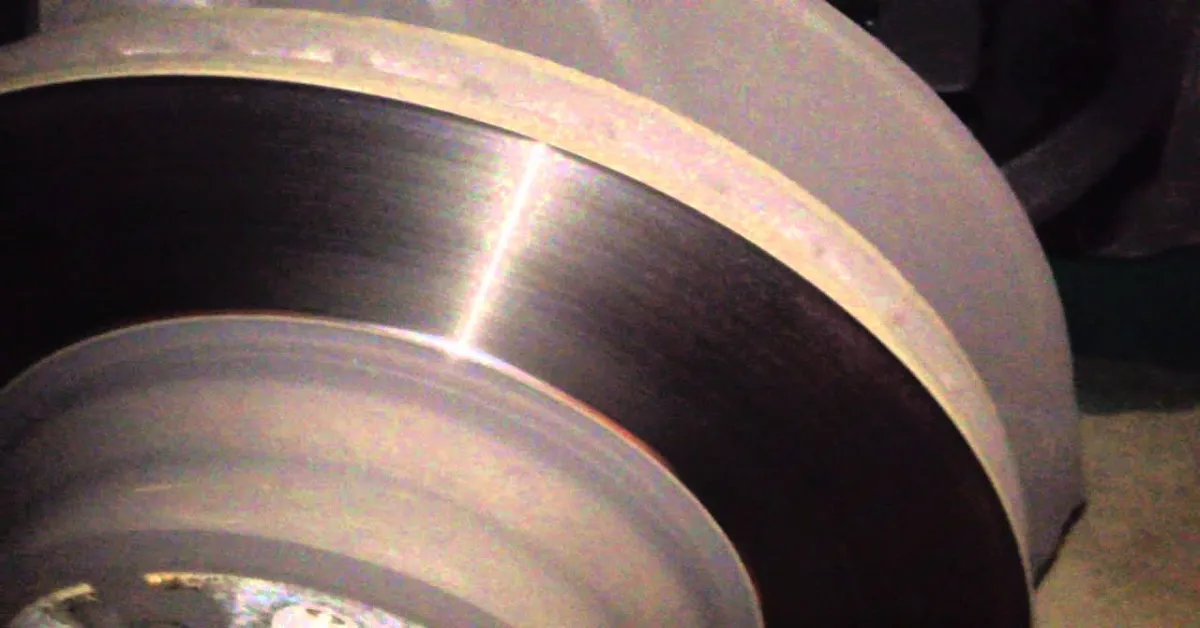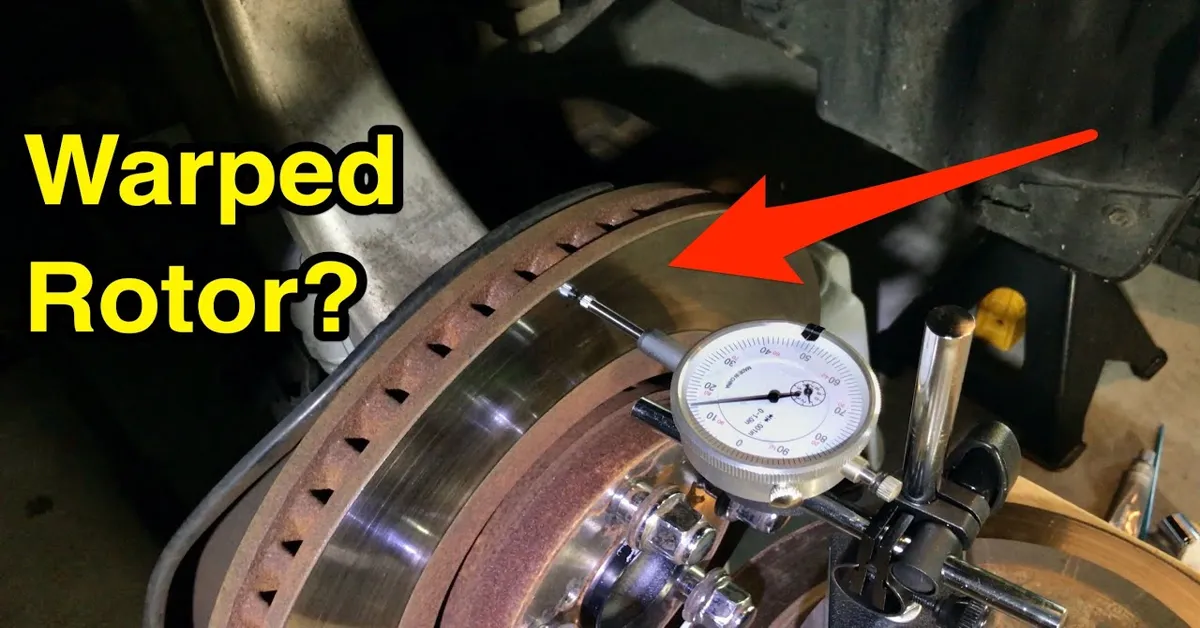As you drive down the highway, you feel your car shaking and vibrating. You start to wonder if there’s something wrong with your vehicle. After a quick inspection, you realize that your brake rotors are warped.
But what does that mean? And how is it different from regular brake rotors? Don’t worry, we’ve got you covered. In this blog, we’ll dive into the world of brake rotors and explain the difference between warped rotors and regular ones. So buckle up and get ready to become a brake rotor expert.
Let’s get started!
Key Takeaway
- Warped rotors cause shaking and vibrating while driving
- Warped rotors are a common issue with brake systems
- Regular brake rotors are flat and smooth, while warped rotors have uneven surfaces
- Warped rotors can be caused by excessive heat or wear and tear
- Regular maintenance and proper driving habits can help prevent warped rotors
Understanding the Basics
. When it comes to your car’s braking system, one of the most common issues is warped rotors. But what exactly are warped rotors and how do they differ from regular rotors? Let’s take a closer look.
First, let’s understand what rotors are. Rotors, also known as brake discs, are an essential part of your car’s braking system. They are attached to the wheels and work with the brake pads to slow down or stop the vehicle when the brakes are applied.
Now, let’s talk about warped rotors. As the name suggests, warped rotors are rotors that have become distorted or uneven. This can happen due to excessive heat, wear and tear, or improper installation.
When the rotors become warped, they can cause vibrations and a pulsating sensation when you apply the brakes, making it difficult to stop the car smoothly. On the other hand, regular rotors are in good condition and are not distorted or uneven. They provide a smooth and consistent surface for the brake pads to grip onto, allowing for efficient braking.
So why does it matter if your rotors are warped or regular? Well, warped rotors can affect the overall performance of your car’s braking system and can even lead to safety issues. The pulsating sensation and vibrations caused by warped rotors can make it difficult to control the vehicle, especially at high speeds. It can also cause uneven wear on the brake pads, leading to the need for frequent replacements.
In contrast, regular rotors provide a smoother braking experience and ensure that your brake pads wear evenly, saving you money in the long run. In conclusion, warped rotors are a common issue that can affect the performance and safety of your car’s braking system. Regular rotors, on the other hand, provide a smoother and more efficient braking experience.
warped rotors vs regular
| Comparison | Warped Rotors | Regular Rotors |
|---|---|---|
| Definition | Warped rotors are brake rotors that have become distorted due to excessive heat or uneven wear and tear, causing vibrations and uneven braking. | Regular rotors are brake rotors that are in their original state and have not undergone any warping or distortion. |
| Causes | Excessive heat, uneven wear and tear, and improper installation can cause rotors to warp. | Normal wear and tear from regular use can cause slight surface irregularities, but they are not considered warped. |
| Symptoms | Vibrations, pulsating brakes, and uneven braking are common symptoms of warped rotors. | Excessive noise, longer stopping distance, and a pulsating brake pedal may indicate the need for regular rotor replacement. |
| Impact | Warped rotors can affect the performance of the braking system and make it difficult to safely stop the vehicle. | Regular rotors may not have a significant impact on braking performance, but they should still be replaced when worn to maintain optimal safety. |
| Repair | Warped rotors can sometimes be resurfaced or turned to correct the distortion, but in severe cases, replacement may be necessary. | Regular rotors can typically be replaced with new ones to maintain the proper functioning of the braking system. |
| Prevention | Proper installation, regular maintenance, and avoiding hard braking can help prevent rotors from warping. | Regular maintenance, including periodic inspections and replacement when necessary, can help prevent issues with regular rotors. |

Pros and Cons of Warped Rotors
Warped Rotors Vs Regular: Exploring the Differences and Impact on Driving Experience When it comes to maintaining a smooth and safe driving experience, having properly functioning brakes is crucial. However, as with any mechanical component, brake rotors can experience wear and tear over time. One common issue that many drivers face is warped rotors.
But what exactly are warped rotors and how do they differ from regular ones? Warped Rotors: The Culprit Behind Shaky Brakes Warped rotors are brake discs that have become distorted due to excessive heat and wear. This can happen when the brake pads press against the rotors, generating friction and heat that can cause the metal to warp. This can result in an uneven surface, causing the brakes to grab and release, leading to a shaky driving experience and reduced braking efficiency.
Regular Rotors: A Smooth and Consistent Ride On the other hand, regular rotors have a smooth and consistent surface, providing a stable and reliable braking experience. These rotors are less prone to warping and can maintain their shape even under extreme conditions. Regular rotors are designed to dissipate heat efficiently, preventing warping and ensuring a consistent braking performance.
The Impact on Driving Experience The main difference between warped and regular rotors is the impact they have on the overall driving experience. Warped rotors can cause vibrations and shakiness when braking, making it difficult to control the vehicle. This can be not only dangerous but also uncomfortable for the driver and passengers.
Regular rotors, on the other hand, provide a smooth and stable braking experience, ensuring safety and comfort on the road. Conclusion: The Importance of Proper Brake Maintenance In conclusion, while both warped and regular rotors serve the same purpose of aiding in braking, their differences can significantly impact the driving experience. It is essential to regularly maintain and inspect your brakes to prevent any issues, such as warped rotors, from occurring.
By doing so, you can ensure a safe and smooth driving experience for yourself and others on the road. So, next time you hit the brakes, remember the difference between warped and regular rotors and the importance of proper brake maintenance.
Regular Rotors: The Safe and Steady Option
Warped rotors and regular rotors are two types of brake rotors that are commonly used in vehicles. Both types serve the same purpose of stopping the vehicle, but they have distinct differences that make them unique. Understanding the differences between these two types of rotors can help car owners make informed decisions when it comes to their vehicle’s maintenance.
What are warped rotors? Warped rotors are brake rotors that have become distorted due to excessive heat and stress. This can be caused by heavy braking, driving in mountainous areas, or towing heavy loads. When rotors become warped, they no longer have a smooth and even surface, which can lead to vibrations and pulsating brakes when driving.
What are regular rotors? Regular rotors, also known as solid rotors, are the most commonly used type of brake rotors. They are made from solid cast iron and have a smooth and even surface. Regular rotors are designed to withstand high temperatures and provide consistent braking performance.
The difference between warped and regular rotors The main difference between warped and regular rotors is their surface. While regular rotors have a smooth and even surface, warped rotors have an uneven surface due to warping. This can affect the way the brakes function and can lead to various issues such as vibrations, pulsating brakes, and uneven wear on brake pads.
Effect on braking performance As mentioned earlier, warped rotors can cause vibrations and pulsating brakes, which can make it difficult to stop the vehicle smoothly. On the other hand, regular rotors provide consistent braking performance, making it easier to stop the vehicle safely and effectively. Maintenance and cost Warped rotors require more maintenance and can be costly to replace.
As they are not able to dissipate heat properly, they can wear out faster and may need to be replaced more frequently. Regular rotors, on the other hand, are more durable and have a longer lifespan, making them a more cost-effective option in the long run. In conclusion, while both warped and regular rotors serve the same purpose, their differences can have a significant impact on a vehicle’s braking performance and maintenance costs.
Read More
https://rotorwarping.com/index.php/2023/11/03/ebc-brake-rotors-warped/
https://rotorwarping.com/index.php/2023/11/03/f150-brake-rotors-warping/
https://rotorwarping.com/index.php/2023/11/03/honda-pilot-warped-rotors/
Statistical Information: warped rotors vs regular
| Comparison | Warped Rotors | Regular |
| Definition | When the brake rotor becomes uneven and causes vibrations while braking | Brake rotors that are evenly smooth and do not cause vibrations while braking |
| Causes | High heat, uneven wear, and improper installation | Normal wear and tear |
| Symptoms | Brake pedal pulsation, steering wheel shaking, and longer stopping distance | None until they become worn down |
| Repair Cost | Can range from $200 to $500 per axle | Usually less than $200 per axle |
| Prevention | Regular maintenance and avoiding hard braking | Regular maintenance and avoiding hard braking |
Important Notice for readers
Attention all drivers! Before you hit the road, it’s important to understand the difference between warped rotors and regular ones. In this article, we will discuss the characteristics of each type of rotor and how they can affect your driving experience. From brake performance to vehicle safety, knowing the difference can save you time and money in the long run.
So buckle up and get ready to learn about the importance of maintaining your vehicle’s rotors. Keep reading to find out which type of rotor is best suited for your driving needs.
FAQs
here are four possible FAQs with answers:
What are warped rotors and how do they differ from regular ones?
Warped rotors are a common issue in vehicles where the brake rotors become uneven due to intense heat and pressure. Regular rotors, on the other hand, maintain a smooth and even surface for effective braking.
How can I tell if my rotors are warped or just worn out?
One way to tell is by feeling for vibration or pulsation when braking. Warped rotors can cause a shaking sensation while regular wear and tear may result in a longer stopping distance.
Can warped rotors be fixed or do they need to be replaced?
It depends on the severity of the warping. In some cases, resurfacing the rotors can fix the issue, but if the warping is too severe, replacement may be necessary.
Are there any warning signs for potential rotor warping?
Yes, some signs include squealing or grinding noises when braking, a burning smell coming from the brakes, or a vibrating steering wheel. These can indicate potential warping and should be checked by a mechanic.
Conclusion
you can use the phrase “warped rotors vs regular” to start the conclusion. In conclusion, the debate between warped rotors vs regular is an important one for car owners. While regular rotors have been the standard for years, warped rotors offer numerous benefits such as improved braking performance and longer lifespan.
However, the decision ultimately depends on individual preferences and needs. It’s crucial for car owners to regularly check their rotors for signs of warping and address any issues promptly to ensure safe driving. As technology advances and the automotive industry evolves, it’s important to stay informed and make informed decisions for the best performance and safety of our vehicles.
Consider all factors and choose the option that best suits your needs and budget.

Leave a Reply